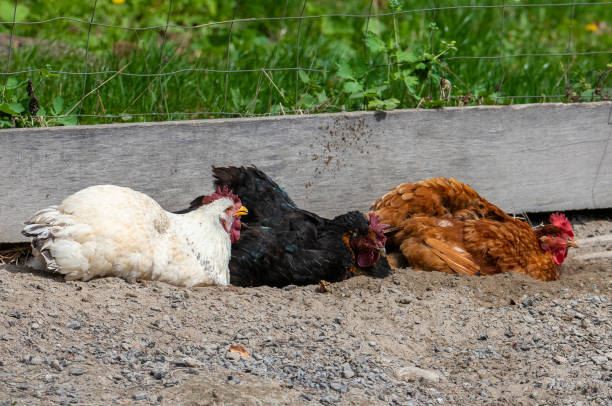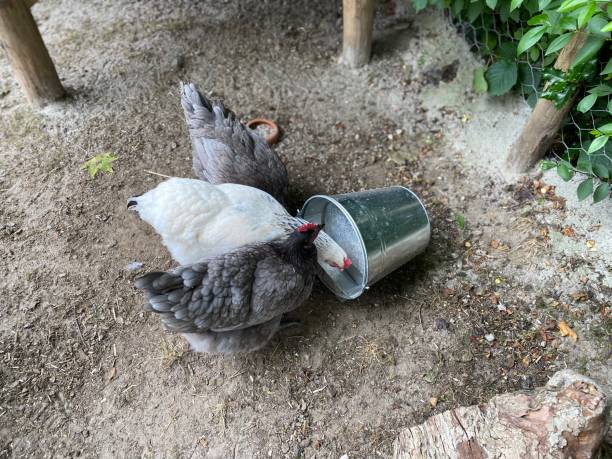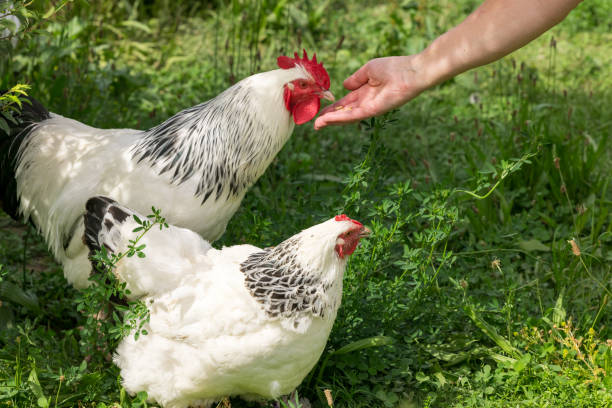Chickens might not speak your language, but their body language tells a lot about their emotions, health, and social structure. By paying close attention to your flock’s behaviors, you can better understand their needs and create a happy, healthy environment for them. Here's a detailed breakdown of the most common chicken behaviors and what they mean.
1. The Pecking Order: Who Rules the Roost?
The pecking order is the foundation of chicken society, defining who gets first dibs on food, water, and the best roosting spots.
-
Key Behaviors:
- Pecking and light squabbling as chickens establish dominance.
- Submissive chickens bowing their heads or stepping aside.
-
What It Means:
- Dominance behavior is normal but monitor for excessive aggression that leads to injuries.
-
Pro Tip:
When introducing new birds, separate them initially, then gradually allow supervised interaction to minimize major disputes.
2. Mating: Courtship or Chaos?
Mating in chickens might look rough, but it’s a natural part of flock life, especially in flocks with roosters.
-
Key Behaviors:
- Roosters perform a “tidbitting” dance, clucking and dropping a wing while circling a hen.
- Roosters may mount hens abruptly.
-
What It Means:
- The rooster asserts dominance and ensures flock reproduction.
-
Pro Tip:
If you have multiple roosters, ensure there are enough hens (around 8–10 per rooster) to prevent overmating and stress.

3. Dust Bathing: Dirt Is the New Clean
Dust bathing is how chickens keep themselves parasite-free and maintain healthy feathers.
-
Key Behaviors:
- Chickens dig shallow pits, roll onto their sides, and kick up dirt onto their bodies.
- They often stretch their wings to expose more feathers to the dirt.
-
What It Means:
- This behavior is vital for hygiene and mental well-being.
-
Pro Tip:
Provide a dust bathing area with a mix of fine sand, dry soil, and diatomaceous earth to maximize effectiveness.
4. Preening: The Art of Feather Maintenance
Preening is how chickens groom their feathers, spreading oils to keep them clean and water-resistant.
-
Key Behaviors:
- Chickens nibble along their feathers, focusing on alignment and removing debris.
- They often twist their necks to reach the oil gland near their tail.
-
What It Means:
- Preening is a sign of a content, healthy chicken.
-
Pro Tip:
Excessive preening might indicate mites or lice. Check their feathers and provide dust baths or treatments if needed.
5. Foraging: Nature’s Scavengers
Foraging is an instinctive behavior that keeps chickens active and entertained.
-
Key Behaviors:
- Chickens scratch at the ground with their feet and peck at anything edible.
- Excited clucking often follows a great find like a worm or bug.
-
What It Means:
- Foraging keeps chickens mentally stimulated and naturally supplements their diet.
-
Pro Tip:
Tossing small treats or grains into the yard encourages foraging and prevents boredom.

6. Perching: Ruling from Above
Chickens instinctively perch to sleep and avoid ground predators.
-
Key Behaviors:
- At dusk, they hop onto roosting bars and settle in with minimal movement.
- Occasionally, chickens shuffle to claim their favorite spots.
-
What It Means:
- Roosting high gives chickens a sense of security and helps prevent predator attacks.
-
Pro Tip:
Provide sturdy, rounded roosts at least 2 feet off the ground and 12 inches apart to avoid crowding.
7. Aggressive Chicken Behavior: From Peckish to Pecking
While occasional pecks are normal, sustained aggression can signal deeper issues.
-
Key Behaviors:
- Aggressive chickens chase, peck, or pull feathers from others.
- Loud squawking and flared feathers often accompany these actions.
-
What It Means:
- Triggers include overcrowding, insufficient resources, or stress.
-
Pro Tip:
- Ensure your coop has at least 4 square feet per bird and multiple feeding stations to reduce competition.
- Isolate persistently aggressive chickens to prevent harm to others.
Final Thoughts: Learning to Speak "Chicken"
By observing your flock’s body language and behaviors, you can become a more intuitive chicken keeper. Whether it's a dust bath party or a dramatic pecking order squabble, these behaviors give you insight into their health, happiness, and social dynamics.
Understanding your chickens’ behavior doesn’t just make your job easier—it deepens your connection to these delightful birds. Remember, a happy flock means happy clucks (and more eggs!).




Leave a comment
All comments are moderated before being published.
This site is protected by hCaptcha and the hCaptcha Privacy Policy and Terms of Service apply.